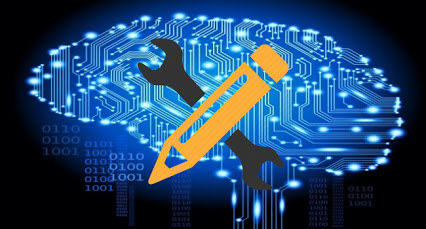This paper was written by Bojan Ploj. Bojan is interested in machine learning, specialy in MLP learning algorithms.
Abstract
During the last twenty years, gradient-based methods have been primarily focused on the Feed Forward Artificial Neural Network learning field. They are the derivatives of Backpropagation method with various deficiencies. Some of these include an inability to: cluster and reduce noise, quantify data quality information, redundant learning data elimination. Other potential areas for improvement have been identified; including, random initialization of values of free parameters, dynamic learning from new data as it becomes available, explanation of states and settings in hidden layers of learned ANN, among other. This chapter deals with the contemporary, non-gradient approach to ANN learning, which is not based on gradual reduction of remaining learning error anymore and it tries to eliminate most of the mentioned deficiencies. Introduction includes a chronological description of some methods, which deal with solutions of mentioned problems: Initializing Neural Networks using Decision Trees (Arunava Banerjee, 1994), DistAl: An inter-pattern distance-based constructive learning algorithm (Jihoon Yang, 1998), Geometrical synthesis of multilayer feedforward neural networks or Multi-Layer Perceptron (Rita Delogu, 2006) and Bipropagation – a new way of MLP learning (Bojan Ploj, 2009).We continue with the description of a new learning method – Border Pairs Method (BPM), which in comparison with the gradient methods carries numerous advantages or eliminates most of the predecessor’s deficiencies. The BMP implements and uses border pairs – learning patterns pairs in the input space, which are located close to the class border. The number of boundary pairs gives us some information about the complexity of the learning process. Boundary pairs are also the perfect basis for the noise reduction. We determine that performing a noise reduction of the border pairs is sufficient. By dividing the input space, the homogenous areas (clusters) are established. For every linear segment of border we assign one neuron in the first layer. The MLP learning begins in the first layer by adapting individual neurons. Neurons on the first layers are saturated, so we get a binary code on the output of the first layer – the code is unified for all members of the same cluster. Logical operations based on the data from the first layer are executed in the following layers. Testing showed that such learning is reliable, it is not subject to overfitting, and is appropriate for on-line learning and susceptible to concept drift in the process of learning (forgetting and additional learning).
To download the full paper, click here.
Top DSC Resources
- Article: What is Data Science? 24 Fundamental Articles Answering This Question
- Article: Hitchhiker’s Guide to Data Science, Machine Learning, R, Python
- Tutorial: Data Science Cheat Sheet
- Tutorial: How to Become a Data Scientist – On Your Own
- Categories: Data Science – Machine Learning – AI – IoT – Deep Learning
- Tools: Hadoop – DataViZ – Python – R – SQL – Excel
- Techniques: Clustering – Regression – SVM – Neural Nets – Ensembles – Decision Trees
- Links: Cheat Sheets – Books – Events – Webinars – Tutorials – Training – News – Jobs
- Links: Announcements – Salary Surveys – Data Sets – Certification – RSS Feeds – About Us
- Newsletter: Sign-up – Past Editions – Members-Only Section – Content Search – For Bloggers
- DSC on: Ning – Twitter – LinkedIn – Facebook – GooglePlus
Follow us on Twitter: @DataScienceCtrl | @AnalyticBridge

